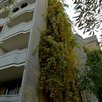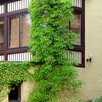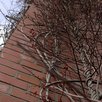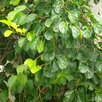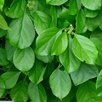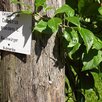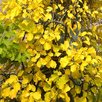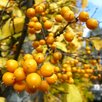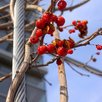Bittersweet / Celastrus
Bittersweet *can* be tamed! This is an extremely vigorous, healthy, plant showing splendid yellow leaves in autumn, and is often used for high greening, as there is less pruning to be done than with wisteria or silver lace vine. Celastrus makes an ornamental addition in the garden, i.e. on a pergola. The fruit will feed birds in winter.
>>> Price
Celastrus orbiculatus: bittersweet, Chinese bittersweet, Asian bittersweet, round-leaved bittersweet
Celastsrus scandens: bittersweet, American bittersweet
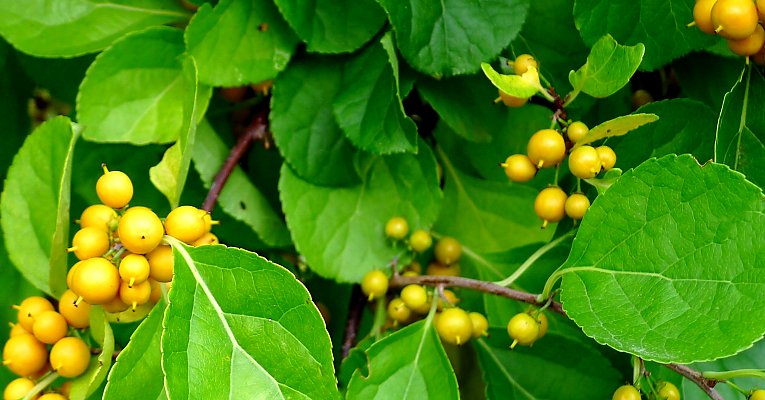
To Thrive...
Bittersweet needs a sunny (full sun) to semi-shaded location; it can be grown in the shade, but will produce fewer flowers and fruit. Best in nutrient-rich soil. Distance between plants: 1.5 - 4 metres.
>>> Price
Characteristics and Pruning
These are vigorous twiners with sturdy stem formation. Celastrus orbiculatus from China is the more common variety. It has a strong growth with broad oval, dentate or serrate, and clearly acuminate leaves. Celastrus scandens from North America has oval, acuminate leaves with undulating margins. There are several other varieties that resemble each other and the mini-kiwi. Foliage from May to October, yellow autumn colouring. Has inconspicuous, pale-green flowers, mostly dioecious (male and female on separate plants). In order to get the decorative berries, it is best to plant several specimens together. Prune once a year to handle its very fast growth, especially in the first 6 - 12 years.
Climbing Aids for the Facade
The climbing support should be sturdy... even old trees will do the trick. Lightning conductors, downpipes, roof gutters, etc.. should not be accessible by the shoots, and any trellis supports (brackets / mounts) should have a distance of at least 1.5 m from all such structures and to the roof gutters -- to the side as well as to the top. Wire rope systems (see chart at the bottom) are suitable if the ropes are arranged parallel to each other as they are with wisteria: the shoots must therefore not be wrapped around the cable for long... if it 'chokes' the wire rope, the anchor screws may be torn out of the wall and the cable deformed. Choose a heavy or massive trellis system.
Suitable cable systems for tree stranglers
Please click on the graphics to call up the detailed view of the respective system!
| = suitable | = conditionally suitable | = not suitable |


![[Translate to Englisch:] Baumwürger an hohen Rankseilen, Geisteswissenschaftliche Fakultät der Universität Leipzig / Sachsen [Translate to Englisch:] Baumwürger an hohen Rankseilen, Geisteswissenschaftliche Fakultät der Universität Leipzig / Sachsen](/fileadmin/_migrated/pics/baumwuerger_rankseile_375.jpg)
![[Translate to Englisch:] Baumwürger Celastrus orbiculatus an einem Metallrohr-Rahmen mit Spannseilen [Translate to Englisch:] Baumwürger Celastrus orbiculatus an einem Metallrohr-Rahmen mit Spannseilen](/fileadmin/_migrated/pics/baumwuerger_wand_375.jpg)
![[Translate to Englisch:] Celastrus orbiculatus an 3 Vertikalseilen [Translate to Englisch:] Celastrus orbiculatus an 3 Vertikalseilen](/fileadmin/_migrated/pics/celastrus_orbiculatus_a375.jpg)
![[Translate to Englisch:] Fassadenbegrünung eines nachträglich gedämmten Wohnblockes mit 3 Baumwürgern Celastrus orbiculatus an jeweils 2 parallelen Stahlseilen (Die vierte Pflanze ist ausgefallen.) [Translate to Englisch:] Fassadenbegrünung eines nachträglich gedämmten Wohnblockes mit 3 Baumwürgern Celastrus orbiculatus an jeweils 2 parallelen Stahlseilen (Die vierte Pflanze ist ausgefallen.)](/fileadmin/_migrated/pics/fassadenbegruenung_celastrus_375.jpg)

